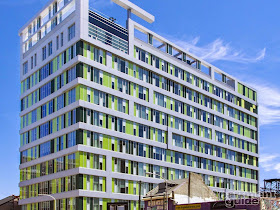Unfortunately, confusing emails with something that requires costly postage, Bryn Mawr College sent out the offer solely based on information gathered from personal medical records. And in this politically sensitive age, it went viral from BuzzFeed to Jezebel.
While the compilation of a "fat list" is pretty insensitive, there is nothing insensitive about the email or the OWLS program. But even PhillyMag.com's own BeWellPhilly was duped by the hype, perpetuating the claim that Bryn Mawr College is policing its students' bodies.
Why is it okay to chastise smokers to the point of shame, treat alcoholics as pathetic and diseased, but whenever someone acknowledges the very real links between obesity and everything from heart disease to cancer, they're "fat-shaming?"
Somewhere along the way, obese Americans began confusing a plea for physical fitness with unrealistic body standards. It's exacerbated the problem to the point that so-called "gyms" have even begun exploiting the phenomenon by offering a cheap place for the overweight to exercise in "judgement-free zones" that are nothing more than pizza parties maintaining their illness.
From hypertrophy to anorexia, unrealistic body image issues are very real problems in themselves. But they're issues at odds with the fitness professionals operating programs like OWLS. Popping steroids and starving oneself is just as unhealthy as obesity. But programs like OWLS are simply designed to help the willing learn how to live healthy lifestyles.
Unfortunately, in this 21st Century age of skewed rationalization, the fit and healthy are marginalized in favor of the copout of "just being yourself." Be yourself, but be your healthy self.
There's a thin line between sympathy and reality, and there's nothing offensive about OWLS. Colleges are more that vacuums of academia. They're places where students become the adults they'll be for - hopefully - the next 70 or 80 years. It's where they learn to make their own decisions, and that includes what to eat and whether exercise will become the permanent part of their adult lifestyle that it should be.
Not one word of OWLS' email is "policing" its students' bodies. It's offering a free alternative to pricy dietitians and personal trainers, something overweight college students will be happy to have around 30 when they're struggling with diabetes and hypertension.
Facts:
- 1/3 of American children are overweight or obese.
- More than 1/3 of American adults are obese.
- 29 million Americans have diabetes.
- 86 million Americans have pre-diabetes.
- 80% of American adults don't get recommended levels of exercise.
- 75% of American teenagers don't get recommended levels of exercise.
- The World Heath Organization predicts that today's children will be the first generation in American history that won't live as long as their parents because of obesity related illnesses.
This is why programs like OWLS exist, and need to exist.























